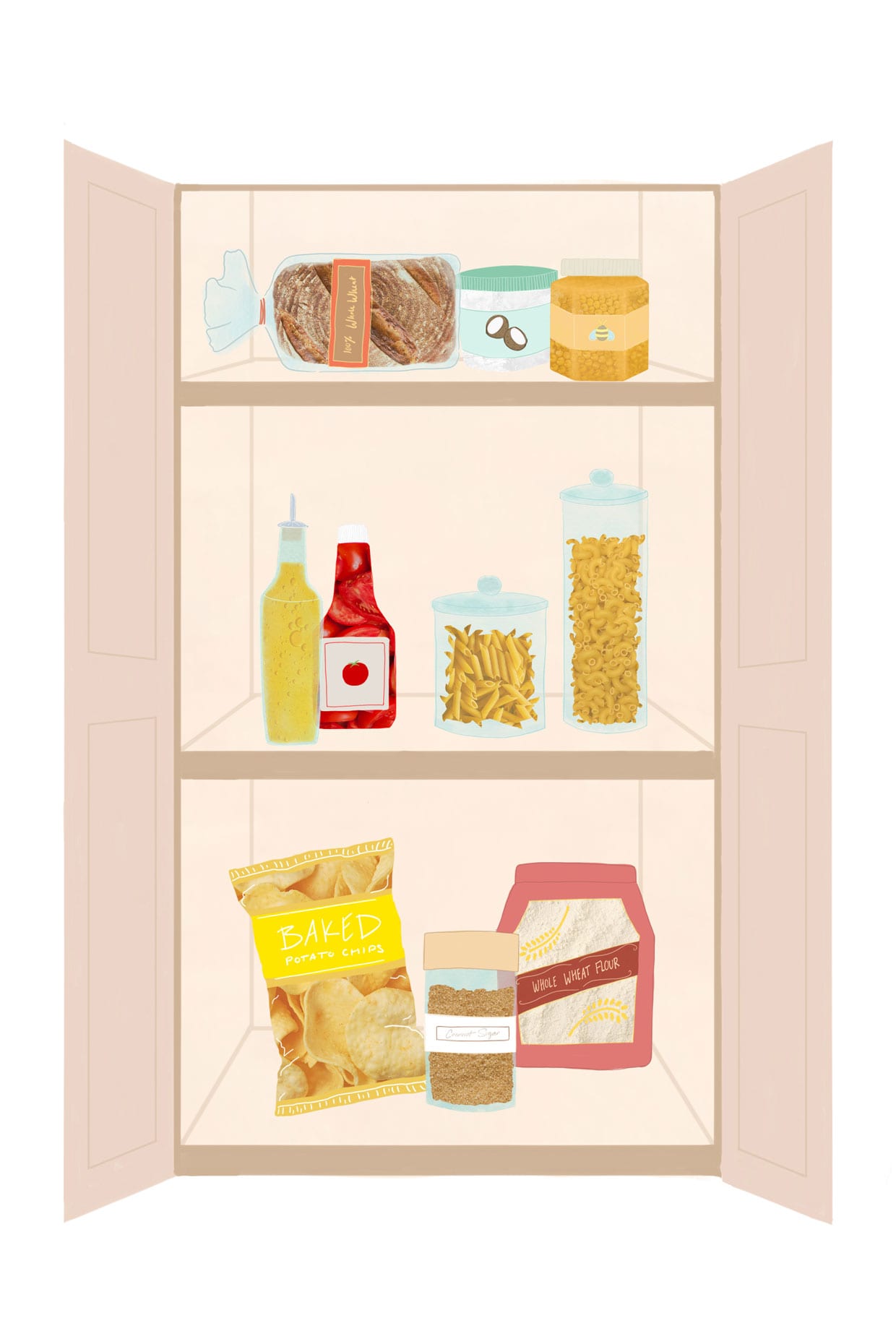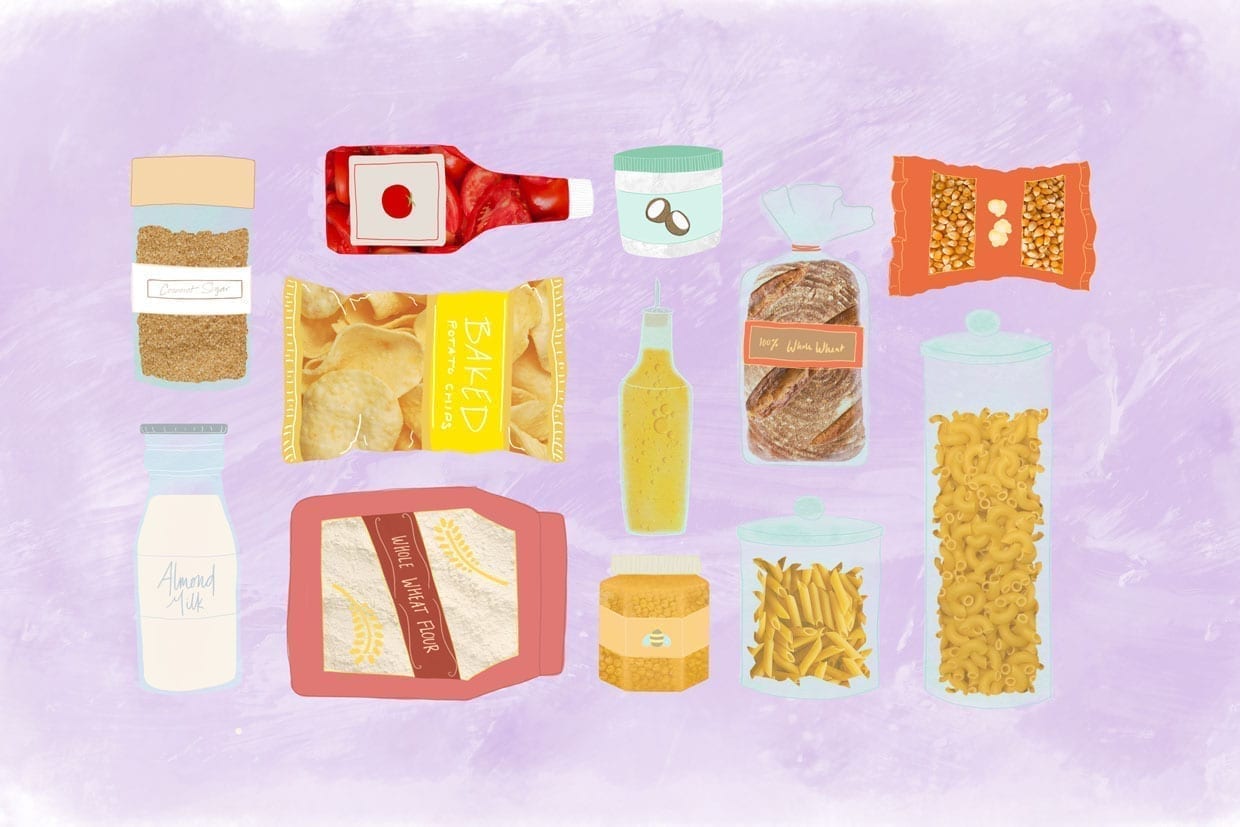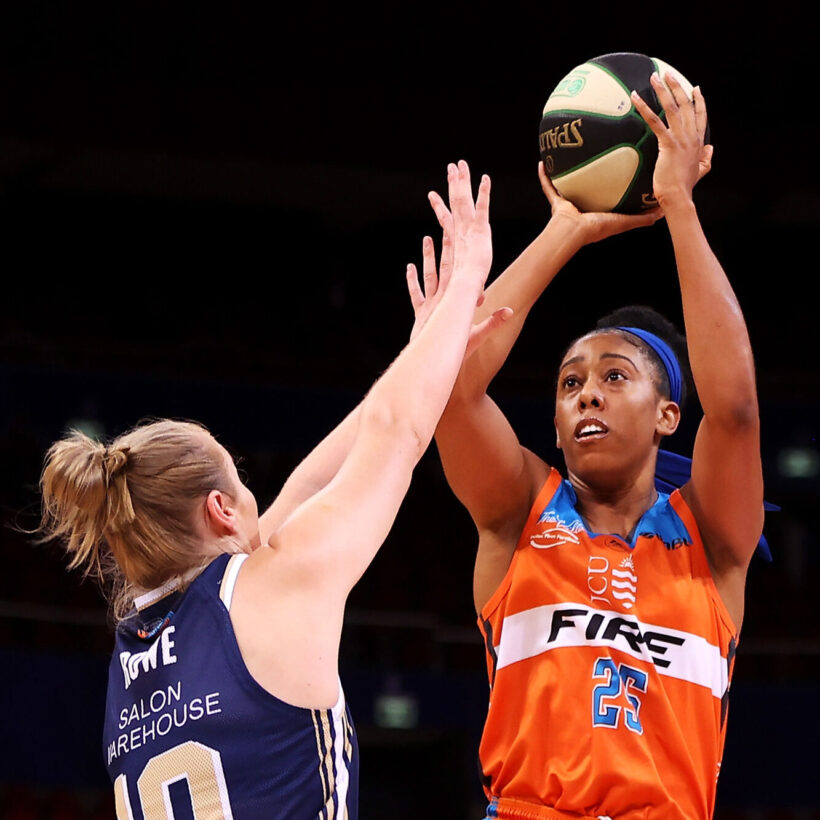After a long commute home following an even longer workday, the thought of spending time slaving away in the kitchen sounds, well, exhausting. Ordering salty, greasy takeout may sound easiest when you want to avoid spending hours in your kitchen, but with a few simple swaps to your pantry, you can effortlessly whip up a healthy dish even if there is nothing left in the fridge. We tapped Dr. Charles Passler, NYC-based nutritionist to the stars (including Bella Hadid and Adriana Lima) to fill us in on how to stock your pantry with healthy foods.
Say Bye, Bye to These Packaged Foods
Passler sent us a long list of pantry staples many people have in their cupboards that actually are not healthy. While some were no-brainers, like white flour, white pasta and white bread (Passler says refined carbohydrates are “nutritionally empty calories” and have been linked to an increase in diabetes, obesity, cardiovascular disease, and Alzheimer’s disease, to name a few), other pantry staples surprised us. “Microwave popcorn is usually high in sodium and artificial flavors, and canned pasta and meat sauces often contain high-fructose corn syrup, artificial caramel color and bad fats from sources like soybean oil,” says Passler.
Additionally, the shelf-stable “non-dairy coffee creamers are extremely high in trans fats, and the sweetened versions are often high in high fructose corn syrup and may contain forms of aluminum known as an ‘anti-caking agent’,” he says. “Ready to eat” or “just add water” meals (think: packaged ramen noodles), are extremely high in sodium and even if it contains any sort of protein or vegetables, most of their nutritional content has been processed out to improve shelf life.
Here are some other items Passler suggests avoiding: corn or vegetable oil, meat tenderizers or seasonings with MSG, artificial sweeteners, packaged cookies and snack cakes, pancake mix and syrup, sugary cereals and sweetened instant oatmeal, energy drinks, BBQ sauce, canned soups and vegetables and bouillon cubes.
Upgrade Your Pantry

Wondering how to make the change from unhealthy to healthy? Passler suggests replacing corn or vegetable oils with olive and coconut oil, white flour, pasta and bread for organic, whole-grain versions or making cookie and baked goods from scratch, rather than indulging in prepackaged goodies (the ingredients in homemade goods make them healthier).
If you must add sweeteners to your food or beverages, Passler is a fan of stevia, agave, honey or maple syrup. Ditch the non-dairy creamers for almond or cashew milk, and try cooking real popcorn in a pan with a bit of coconut oil and Himalayan salt to taste. When shopping for chips, look for those that say “baked chips” on the label — they contain less sodium and are not fried in unhealthy oils.
Protein bars maybe a pantry staple, but most of them are high in sugar and low in protein. When purchasing protein bars, look for a healthy ratio of 20 grams of carbs to 15 grams of protein, organic or non-GMO, and have 0 to 0.5 grams of saturated fats and/or trans fats.
Lastly, if you must have ketchup with your homemade fries, “head to a higher-quality supermarket and find a version of ketchup that has the lowest sugar, no high fructose corn syrup and the highest levels of vitamins A and C,” says Passler.
Storage Wars
Once you have purchased all your new healthy pantry food staples, it is time to store them. When it comes to setting up your pantry so that you always reach for healthier options, it is best to place them waist to shoulder level. Only set low sugar, high fiber, higher protein and nutrient-dense staples on those particular shelves. “All other items should be above eye level (especially with children and teenagers) or below waist height,” says Passler.
Remember, a healthier pantry means a healthier diet. Now get to the grocery store stat!







